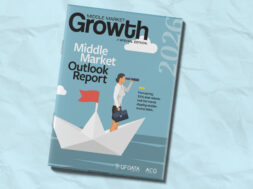Expanding into Asia: Lessons from Biotech
There's a strong appetite for biotechnology in Asia, but what should companies know before establishing a presence—and what should be avoided?

This article is brought to you by Velocity Global.
Biotechnology companies looking to expand internationally have seen some of the greatest successes—and overcome some of the most profound challenges—in Asia. With immense pressure to innovate and bring treatments to market quickly, these companies are great case studies for any organization wishing to build a multinational presence.
Why Asia Matters to Biotech
On one hand, it’s math: Asia contains more than half of the global population and available talent, so the potential value of expansion there is obvious. But this is a complex region with substantial differences in economies, regulatory environments and culture that have made expansion complicated. American biotech companies have traditionally focused on their home markets and Europe, but this is starting to change.
In a 2008 survey of international biopharmaceutical leadership, 94 percent of respondents expressed interest in expansion beyond their home countries, with 90 percent interested in Asia.
Recent commitments for reform favor innovation, intellectual property protection and the biotechnology market specifically. The Asian cancer treatment market alone will jump 40 percent from 2015 to 2020, according to the World Health Organization. The drastic rise in certain ailments and air pollution-related deaths have also made Asian countries—particularly China and India—rich markets for pharmaceuticals.
Transferable Lessons for Global Expansion
So, how have biotech companies begun to realize the benefits of Asian markets? Here are three takeaways that can inform just about any company’s global expansion approach—no matter your target region:
Watch for accelerating regulatory and public investment reforms. Asia’s thirst for innovation and investment is largely self-motivated: Its populations are seeing much higher treatment needs across a variety of conditions and demographics. When government action begins to align with your market goals, a good match might be emerging.
It’s not just about market size. The enormous numerical advantages of Asia are obvious, but expansion has to be about more than that. Biotech has succeeded in Asia because the continent disproportionately needs biotech, not simply because it is a huge population pool.
Pick partnerships and specific markets, not locales. For most biotech entrants, partnership— as opposed to building their presence from scratch—has been the most desirable strategy. Whether they do this via acquisitions, joint ventures, out-licensing or other methods, this approach offers substantial growth potential while avoiding the effect of going in blind.
Widen Your Global Perspective
No matter your destination market, learning from others who have gone before—regardless of their industry—can save time and help you avoid costly strategic errors. Along with the right advice and partnerships here at home, a little global intelligence can change everything.
This story originally appeared in the May/June print edition of Middle Market Growth magazine. Read the full issue in the archive.

Rob Wellner, Velocity Global’s senior vice president of sales, draws on 12 years of experience in capital markets to help organizations expand internationally, including using Velocity Global’s International PEO service to overcome challenges associated with global M&A. With unrivaled expertise in over 185 countries, Velocity Global delivers end-to-end services and best-in-class support to help companies confidently navigate the entire life cycle of international business. For more information, visit velocityglobal.com/acg.


